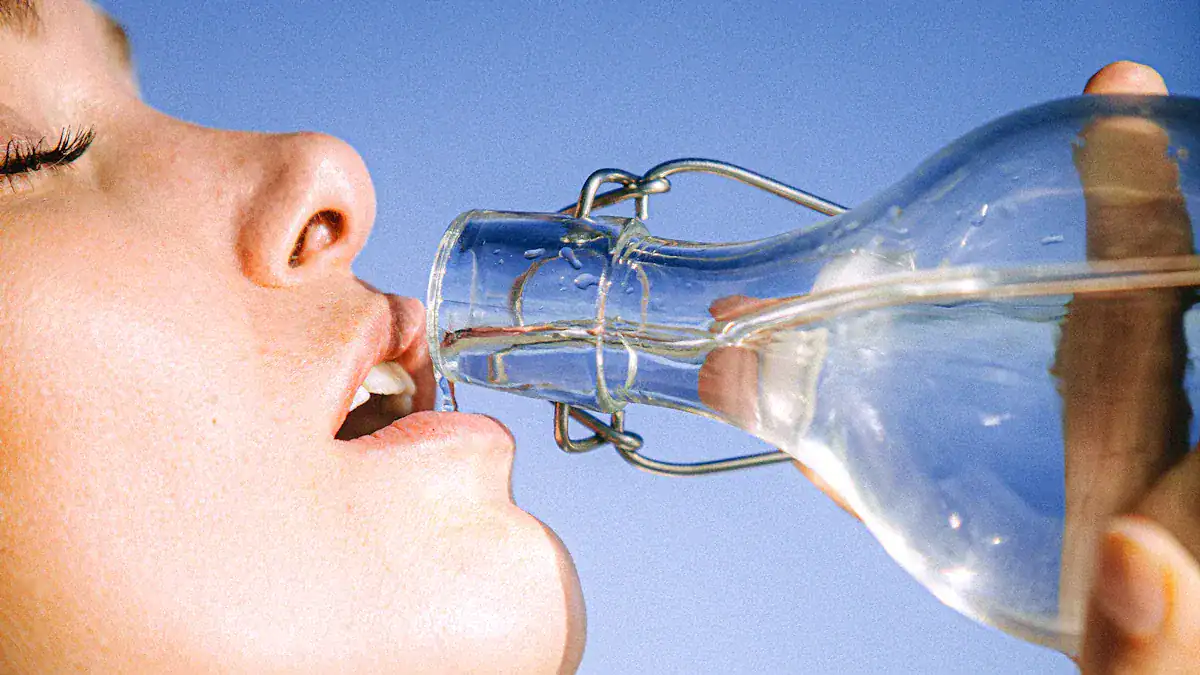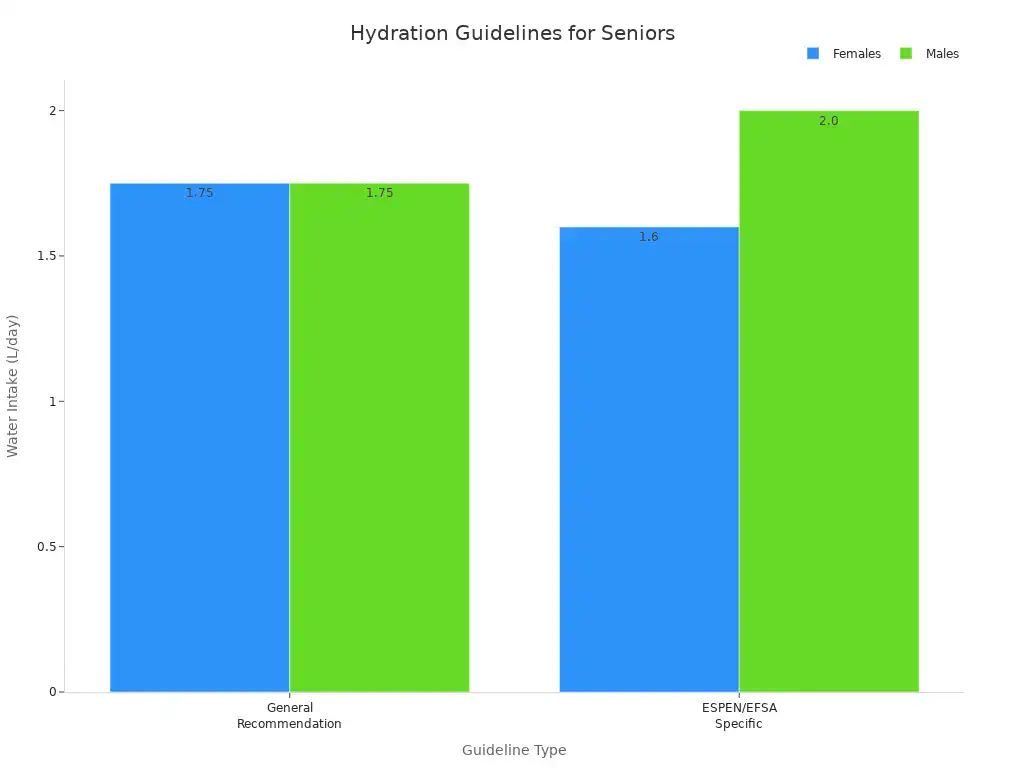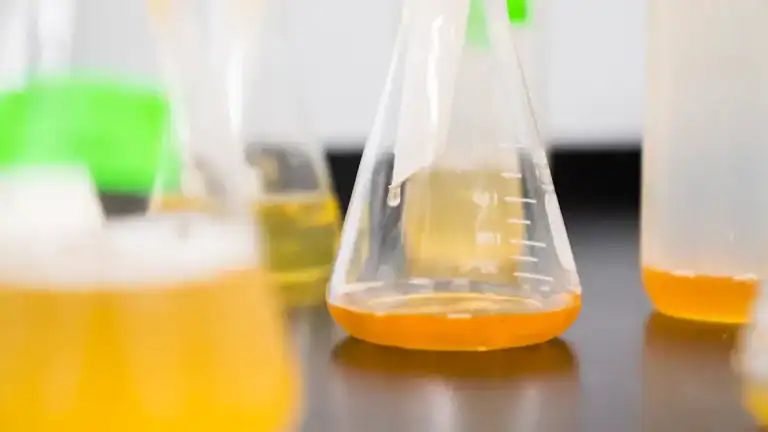
Your body relies on water for almost everything. Water makes up about 60% of your body. This highlights the importance of water for your overall health. However, your hydration needs are not universal. Your age significantly changes how much water you need. This guide provides a clear, age-specific look at your daily water intake. It helps you optimize your essential hydration for better health. Both too little water and too much water can cause problems. Proper hydration is key.
Key Takeaways
Your body needs water for many important jobs. These include controlling body temperature and moving nutrients.
Water needs change as you get older. Babies, children, adults, and seniors all need different amounts of water.
Dehydration and over-hydration are both bad for your health. It is important to drink the right amount of water.
Your activity level, environment, and health conditions change how much water you need. Adjust your water intake based on these factors.
Drink water regularly throughout the day. Eat fruits and vegetables with high water content to stay hydrated.
Water’s Vital Role
Core Functions of Water
Water is more than just a drink; it is essential for your body’s daily operations. The importance of water cannot be overstated. It helps regulate your body temperature, keeping you cool when you are hot and warm when you are cold. Water transports nutrients to your cells and carries waste products away.
It lubricates your joints, allowing smooth movement. Your organs also need water for protection. For example, your brain is 83% water, and this fluid impacts your cognitive function, mood, and memory. Water also helps your muscles expand and contract efficiently, which affects your strength and overall performance. It is crucial for metabolic processes, forming urine, sweat, and blood plasma. This shows how vital water in our bodies truly is.
Dehydration’s Health Impact
Even mild dehydration can significantly affect your health. When you do not drink enough fluid, you might feel tired or have a headache. You may notice a dry mouth or less frequent urination.
Your urine might also appear dark. Children and infants show different signs, like fewer wet diapers or a sunken soft spot. Mild dehydration can impact your energy levels, making you feel sluggish. It can also affect your cognitive function, making it harder to focus or think clearly. Your physical performance will suffer too, as dehydrated muscles move slowly. Losing even a small amount of body fluid can lead to issues with blood pressure and heart rate.
Over-Hydration Risks
While getting enough fluid is important, drinking too much water can also be dangerous. This condition is called over-hydration or water intoxication, and it can lead to hyponatremia. Hyponatremia means your blood sodium levels become too low. Symptoms include nausea, vomiting, and headaches. You might also feel confused, drowsy, or experience muscle cramps.
When sodium becomes too diluted, your cells, especially brain cells, can swell. This swelling can cause serious problems like seizures, coma, and, in rare cases, even death. Athletes, particularly marathon runners, face a higher risk because they drink large amounts of water and lose sodium through sweat. Maintaining a proper balance of water in our bodies is key for good health.
Your Daily Water Intake Chart
Your body’s water requirements change throughout your life. Understanding these changes helps you maintain essential hydration. This chart provides specific daily water intake recommendations based on age. Remember, these are general guidelines for healthy individuals. Your personal needs can vary.
Infants and Toddlers
For the youngest among us, fluid intake is crucial. For infants aged 0-6 months, breast milk is the sole source of nutrition. It provides all the necessary fluid.
For infants aged 6 to 12 months, breast milk or infant formula remains the main source of nutrition. This is true even as you gradually introduce solid foods. Around 6 months, you can offer a small amount of water in a cup. This amount is typically 4-8 ounces per day, which is about 0.5-1 cup. Infants less than 1 year of age should not drink juice.
Toddlers aged 1 to 3 years need careful attention to their fluid intake. Water is the primary drink for them.
They should aim for approximately 2 to 4 cups (16 to 32 ounces) of water daily. This water intake, combined with milk and fluids from food, helps meet their hydration needs. Milk intake is also important. Offer 2-3 cups of plain whole milk for 1-year-olds. For 2 and 3-year-olds, up to 2 cups of plain fat-free or low-fat milk is suitable. Children between 12 and 24 months should consume 1 to 4 cups of drinking water daily.
Children and Adolescents
As children grow, their water requirements increase. Children aged 4-8 years should aim for around 5 cups (40 ounces) of fluids daily. This amount includes all beverages and water-rich foods consumed throughout the day. For children over 8, a minimum of 64 ounces (eight 8-ounce cups) of water is a good target.
Here is a more detailed look at recommended fluid intake for children and adolescents:
Age Range | Sex | Cups/Day |
|---|---|---|
4 to 8 years | Girls and Boys | 7 |
For adolescents, the recommended dietary fluid intake varies by gender.
Age Group (years) | Gender | Recommended Daily Water Intake (ml) |
|---|---|---|
9-13 | Males | 2100 |
9-13 | Females | 1900 |
These amounts include all sources of fluid, not just plain water consumption.
Adult Water Intake
Adults have specific water requirements to maintain optimal health. The Institute of Medicine (IOM) suggests an adequate total water intake of 3.7 liters (125 ounces) per day for adult men. This includes water from all foods and liquids. For adult women, the Academy of Nutrition and Dietetics recommends 73 ounces (9 cups or 2.1 liters) of fluid daily. A general guideline for adults is to drink 8 glasses of water daily. This helps ensure you get enough drinking water.
Pregnancy and Lactation
Pregnant and breastfeeding individuals have increased fluid needs. Your body works harder during these times. The Chinese Dietary Guidelines (2022) recommend a daily fluid intake of 1700 mL for pregnant women.
This is 200 mL more than the 1500 mL recommended for non-pregnant adult women. Pregnant individuals should increase their fluid intake by at least 300 ml daily. This is especially true starting in the second trimester. This increase corresponds to an increase in caloric consumption of about 300 calories. The American College of Obstetricians and Gynecologists (ACOG) suggests that pregnant women consume approximately 10 8-ounce cups of water or other beverages daily.
Lactating individuals also need more fluid. You lose approximately 400-800ml of water daily through breastmilk. To meet these demands, increase your fluid intake to quench thirst. Drink an 8-ounce glass of water, juice, or milk at each meal. Also, drink an 8-ounce glass of water, juice, or milk every time your baby is fed. This helps support milk production and your overall hydration.
Senior Hydration Needs
Hydration for the elderly is particularly important. As you age, your body’s ability to regulate fluid balance changes. You may have a reduced thirst sensation. Your kidneys become less efficient at conserving water. Visual changes and decreased sensitivity of volume osmoreceptors also affect thirst. These factors increase the risk of dehydration in the elderly.
Here are general hydration guidelines for seniors over 65 years old:
Guideline | Females (L/day) | Males (L/day) |
|---|---|---|
General Recommendation | 1.5 – 2.0 | 1.5 – 2.0 |
ESPEN/EFSA Specific | 1.6 | 2.0 |
The ESPEN guidelines, which consider age, have a 96% consensus among experts. They are based on EFSA recommendations. Both ESPEN and EFSA guidelines account for all fluid sources, including food. Approximately 20% of total fluid intake typically comes from food.

Many factors can contribute to dehydration in the elderly. These include mobility issues, visual impairment, and incontinence. The number of times fluids are offered, multiple diseases, and medications also play a role.
Difficulty eating and drinking, vomiting, and diarrhea can also lead to dehydration. The prevalence of dehydration in community-dwelling older adults ranges from 1% to 60%. In long-term care residents, rates for impending dehydration are 28–30.5%. Existing dehydration rates are 20–38.3%. Dehydration can lead to preventable hospitalization, increased morbidity, and higher healthcare costs. It can also cause misdiagnoses, delirium, and an increased risk of heat stroke.
Understanding Your Water Intake Needs
Your daily water requirements are not fixed. Many things change how much water you need. You must adjust your fluid intake based on these factors. This helps you stay properly hydrated.
Activity Level Adjustments
Your body needs more water when you are active. Physical activity increases your body’s need for water. Exercise will increase your fluid needs. If you are physically active, you may need higher amounts of daily fluid intake.
Intense physical activity significantly increases your daily water requirements. When you exercise, especially in hot places, you sweat more. This means you need to drink more water. You might also need to replace electrolytes like sodium and potassium. Even in cold weather, you still sweat.
You might not feel as thirsty, but you still lose fluid through urine and breathing. Not drinking enough water during activity hurts your performance. Your strength can drop by 2%. Your power can drop by 3%. High-intensity endurance can drop by about 10%. It also affects your brain. Your response time, coordination, memory, attention, and focus can all suffer. Therefore, you must increase your water intake with intense physical activity. This helps you stay hydrated and perform your best.
Environmental Factors
Your surroundings also affect your water needs. Hot temperatures raise your risk of dehydration. Your body loses fluid faster in the heat. Keeping enough fluid in your body is vital. It helps regulate your temperature, control blood pressure, deliver nutrients, and keep your digestive system healthy. A drop in fluid levels can harm many body systems.
Humid conditions make your body work harder to cool itself. You lose fluid and electrolytes faster through sweat. This happens because moist air stops sweat from evaporating. Evaporation is how your body cools down. When humidity goes above 60%, sweat does not evaporate well.
Your body temperature rises faster. Your heart rate increases. You feel more tired. Your body keeps sweating, but it does not cool you down as much. This speeds up dehydration. On a typical hot summer day, you should drink an extra 0.5 to 1 liter of water. If you are active outdoors for more than an hour, drink 8 ounces of water every 15 to 20 minutes. This means 24 to 32 ounces per hour. Do not drink more than 48 ounces per hour. Drinking too much can dilute your blood sodium and electrolytes. This can cause headaches, nausea, confusion, and serious problems like seizures.
High altitudes also increase your water loss. The air is drier at higher altitudes. This causes more moisture to evaporate from your skin. You also breathe faster and more often because there is less oxygen.
This increases water loss from your lungs. Your body urinates more often as it gets used to high altitude. This helps your body adjust. Your thirst might also decrease, especially in cold temperatures. This makes it harder to know when you need to drink. Water loss through breathing at high altitude is twice as fast as at sea level. High-altitude areas often have low humidity. They also have more sun and wind. These factors lead to greater water evaporation from your body. You should drink an extra 1 to 1.5 liters of water daily at high altitudes. Aim for a total of 3 to 4 liters.
Health Conditions
Certain health conditions and medications can impact your hydration. Some drugs can cause you to lose too much water. They do this by increasing water elimination through diarrhea, urine, or sweat. They can also make you less thirsty or reduce your appetite. Some medicines change how your body regulates temperature.
Laxatives for constipation can make you lose too much water. They speed up bowel movements. This can lead to dehydration if you have diarrhea.
Caffeine, found in some pain medicines, can make you urinate more.
Diuretics, or “water pills,” for high blood pressure or heart failure, make your kidneys release more sodium and water. This increases urination and fluid loss. Examples include furosemide and bumetanide.
Apremilast for plaque psoriasis can cause diarrhea. This can be severe enough to cause dehydration.
Blood pressure medications like ACE inhibitors (e.g., lisinopril) and ARBs (e.g., losartan) can cause dehydration. They affect how your body manages fluid balance and thirst. They can make you feel less thirsty. ACE inhibitors can also cause stomach pain and watery diarrhea.
Diabetes medications like metformin can cause upset stomach and diarrhea. This can lead to dehydration if it continues. Empagliflozin and canagliflozin (SGLT2 Inhibitors) make your kidneys remove more sugar in your urine. This high sugar content pulls water, causing you to urinate more often. This can lead to dehydration.
Dietary Contributions
The food you eat also contributes to your overall fluid intake. About 20-30% of your daily fluid intake comes from food sources. A balanced diet can add up to two cups of fluid to your daily intake. For example, eating the recommended two servings of fruits and three servings of vegetables daily can provide about 15 ounces of fluid. These water-rich foods help you meet your daily water requirements.
Optimizing Plain Water Consumption
You can easily improve your daily plain water consumption. Small changes make a big difference in your overall hydration. These strategies help you drink more water and maintain good hydration levels.
Simple Hydration Strategies
Make drinking water a regular habit. Carry a reusable water bottle with you. This reminds you to drink throughout the day. Set reminders on your phone to take sips. Drink a glass of water before each meal. This also helps you feel full. You can flavor your water naturally. Add slices of lemon, cucumber, or berries. This makes drinking water more enjoyable.
Hydrating Food Choices
Your diet also helps your fluid intake. Many fruits and vegetables contain a lot of water. You can eat these foods to boost your water intake.
Here are some fruits with high water content:
Watermelon: Up to 91% water
Strawberries: Up to 91% water
Grapefruit: Up to 91% water
Cantaloupe: Up to 90% water
Peaches: Up to 89% water
Consider these vegetables for their high water content:
Lettuce: Up to 96% water
Celery: Up to 95% water
Bok Choy (Pak Choi): Up to 95% water
Radishes: Up to 95% water
Cucumber: Up to 95% water
Monitoring Hydration
You can easily check your hydration status. Pay attention to your body’s signals. Your urine color is a good indicator. Pale yellow urine means you are well-hydrated. Dark yellow or amber urine suggests you need more drinking water. Your thirst level also tells you something. If you feel thirst, you are already mildly dehydrated.
Tip: Check your urine color regularly. This helps you know if you are drinking enough.
Avoiding Common Mistakes
Do not rely only on sugary drinks. These drinks often contain empty calories. They do not provide the same hydration benefits as plain water consumption. Many people only drink when thirst strikes.
This means you are already behind on your fluid intake. You need to drink drinking water consistently throughout the day. Your body loses water constantly. This happens through breathing, sweating, and urination. Ignoring these losses can lead to low energy and poor focus. Make plain water consumption a priority.
You now understand the critical importance of mindful and age-appropriate essential hydration. Your water needs are dynamic. Many factors influence your fluid intake. This means you need a personalized approach to hydration. Use this chart and tips as your starting point. Develop healthy habits. Consistent hydration has a simple yet profound impact. It improves your daily life and long-term health.
Remember, prioritizing your essential hydration is a small step with big rewards for your well-being.



